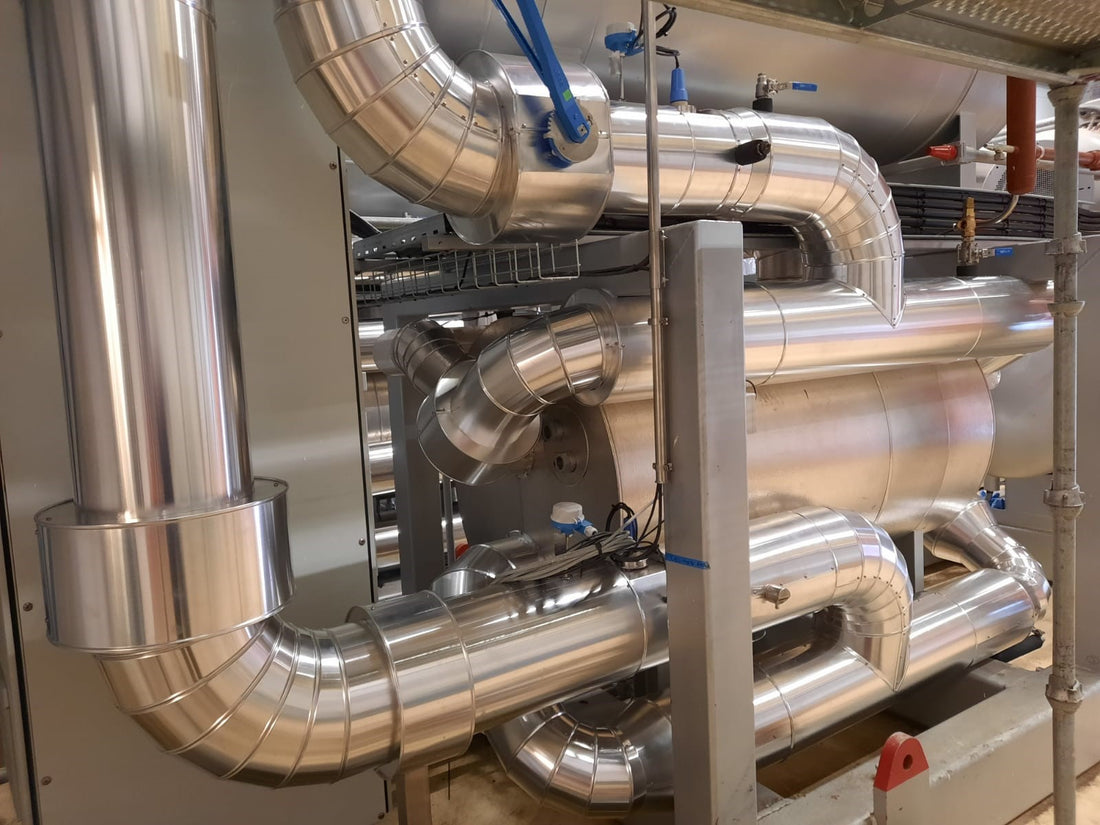
Exploring the Potential of Innovative Cold Pipe Insulation Solutions
Share

Introduction
The growing demand for energy efficiency, sustainability, and cutting-edge technologies in industrial applications is propelling the cold pipe insulation industry into a new era. Cold pipe insulation refers to the materials used to prevent the heat gain from outside or condensation on cold surfaces of piping systems, ensuring optimal performance and minimizing energy loss. As the industry evolves, innovative cold pipe insulation solutions are reshaping the landscape of industrial piping, creating new opportunities for investors to tap into a fast-growing sector.
With the increasing focus on energy conservation, eco-friendly solutions, and advanced materials, the cold pipe insulation market is primed for significant growth. From aerogel to smart insulation, these breakthroughs are paving the way for more efficient, sustainable, and cost-effective solutions. Let’s delve into the latest innovations in this space and explore the opportunities they present.
1. Advancements in Insulation Materials
Innovative materials are at the forefront of transforming the cold pipe insulation industry. Let’s take a look at some of the most promising developments:
· Aerogel Insulation: Often referred to as the "world's lightest solid," aerogel is a highly porous material known for its exceptional thermal properties. It offers superior insulation performance with minimal thickness, which makes it ideal for applications requiring space-saving designs without compromising on insulation quality. Aerogel’s rise as a preferred insulation material could disrupt traditional insulation solutions, driving demand for advanced materials in industries ranging from construction to refrigeration.
· Vacuum Insulation Panels (VIPs): VIPs use the principle of creating a vacuum between two panels to provide incredibly low thermal conductivity. These panels deliver exceptional insulation performance, especially in limited-space applications such as refrigeration systems and appliances. As demand for more efficient insulation in constrained spaces grows, VIPs are expected to see a significant rise in adoption.
· Nanotechnology: The integration of nanomaterials into insulation solutions is enhancing thermal conductivity and mechanical strength. By incorporating nanoparticles into traditional materials, manufacturers are developing insulation products that not only outperform existing options but also maintain durability. The growth of nanotechnology will provide investors with new opportunities to support the development of smarter, more efficient insulation systems.
2. Advancements in Insulation Design and Installation Techniques
As cold pipe insulation technology advances, so does the design and installation process. Key innovations include:
· Prefabricated Insulation Systems: The increasing use of pre-insulated pipe sections is revolutionizing the industry. These prefabricated solutions offer enhanced insulation performance, reduce on-site labor, and allow for faster project completion. As more companies look to cut down on operational time and costs, the adoption of prefabricated systems is expected to skyrocket.
· Modeling and Digital Twin Technology: 3D modeling and digital twin technology are empowering companies to design, optimize, and simulate cold pipe insulation systems with precision. These digital technologies allow for improved planning, analysis, and performance of insulation systems, ensuring greater efficiency in maintenance and repairs. As industries increasingly embrace digital transformation, the demand for modeling solutions and predictive maintenance tools will continue to grow, presenting new investment opportunities.
3. Rising Focus on Energy Efficiency and Sustainability
Energy efficiency and sustainability are no longer just trends—they are necessities for the modern industrial landscape. Cold pipe insulation solutions are evolving to meet these demands:
· Low-Energy Loss Systems: The industry is focusing more than ever on minimizing energy losses in cold pipe insulation systems. The use of advanced materials and optimized system designs significantly boosts energy efficiency, reducing operational costs and lowering environmental impact. As governments and businesses continue to prioritize energy conservation, the adoption of energy-efficient insulation systems will drive market growth.
· Sustainable Insulation Solutions: The move towards eco-friendly insulation materials is gaining momentum. Insulation materials made from bio-based and recycled content are reducing environmental footprints while still providing top-notch insulation. As businesses seek to meet sustainability goals and improve their environmental credentials, investors should look to capitalize on this growing trend within the insulation sector.
4. The Growing Popularity of Smart Insulation Solutions
The integration of smart technology into cold pipe insulation systems is opening up new frontiers for performance monitoring and optimization:
· Sensor-Embedded Insulation: By embedding sensors into insulation materials, TPAs and manufacturers can monitor temperature, humidity, and overall insulation performance in real-time. This proactive approach to maintenance and energy optimization allows for early detection of insulation failures, enhancing the lifespan of the system and improving overall efficiency. Smart insulation is transforming the way energy is managed and utilized, offering significant growth opportunities for investors.
· Phase Change Materials (PCMs): PCMs enable insulation to store and release heat energy, helping to maintain consistent temperatures and mitigate temperature fluctuations. This technology is invaluable for systems requiring stable conditions, improving both energy efficiency and occupant comfort. The smart insulation market is expected to expand as more industries implement PCM-based solutions to enhance system performance and reduce energy costs.
Conclusion: A Future of Energy Efficiency, Sustainability, and Innovation
The cold pipe insulation industry is on the cusp of significant growth, driven by advancements in materials, installation methods, and design techniques. With an increasing focus on energy efficiency, sustainability, and the integration of smart technologies, the market is poised to meet the evolving needs of industries across the globe. For investors, this presents a wealth of opportunities to engage with a rapidly expanding sector that will be crucial to the global push for sustainability and energy conservation.
As innovative insulation materials and cutting-edge technologies continue to evolve, the future of the cold pipe insulation market will be shaped by greater operational efficiencies, cost savings, and environmental benefits. Investors looking to capitalize on this transformative industry will find themselves well-positioned to benefit from the growing demand for advanced cold pipe insulation solutions.
Your Deep Dive Starts Here – See the Full Blog!